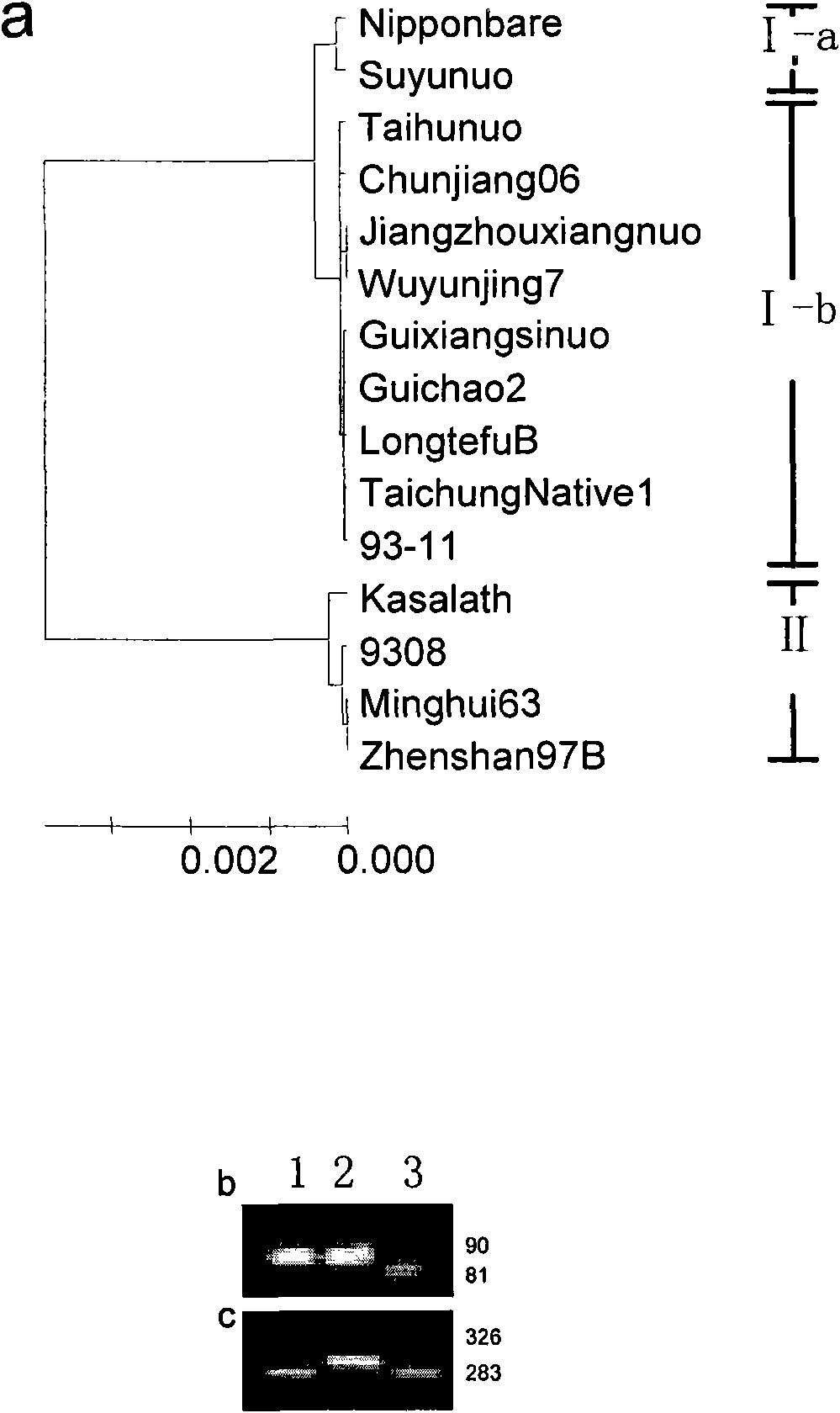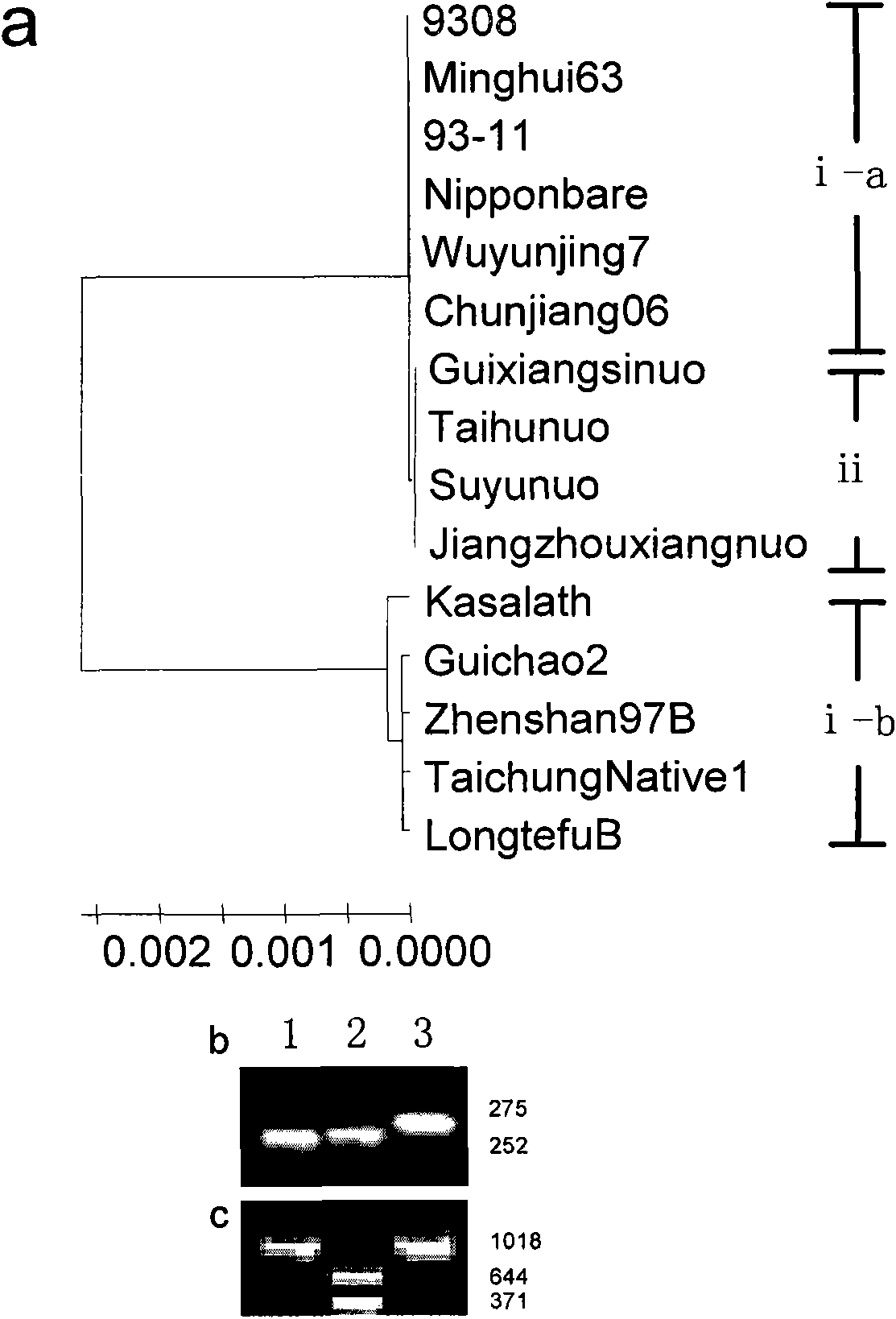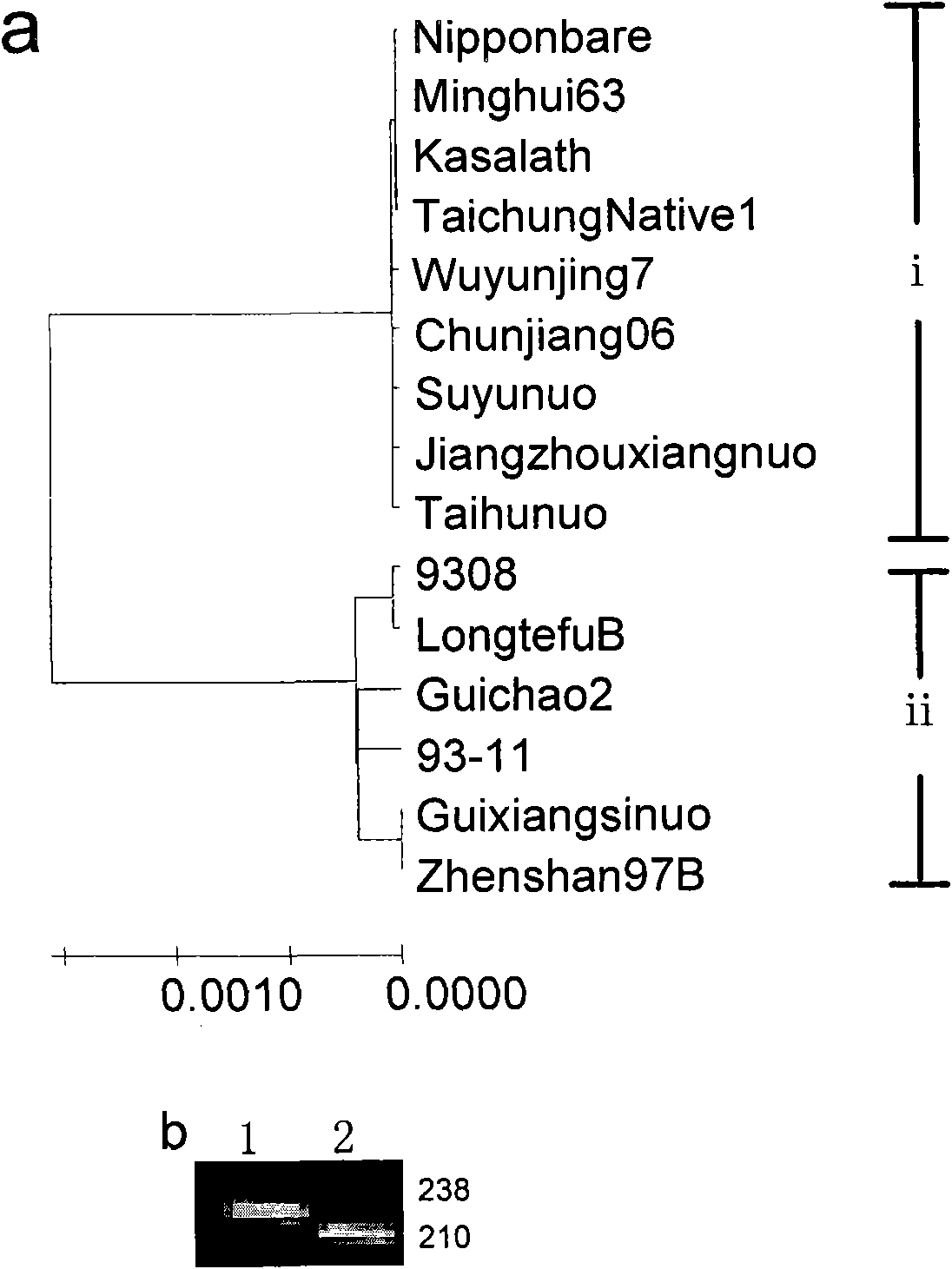Molecular marker of gene for regulating gelatinization temperature of rice and application thereof
A technology of gelatinization temperature and rice, applied in biochemical equipment and methods, DNA/RNA fragments, microbial determination/inspection, etc., can solve the problem of few molecular markers
- Summary
- Abstract
- Description
- Claims
- Application Information
AI Technical Summary
Problems solved by technology
Method used
Image
Examples
Embodiment 1
[0041] Embodiment 1, the application of SSII-3 molecular marker
[0042] The 15 varieties of rice were obtained from the Rice Research Institute of the Chinese Academy of Agricultural Sciences. The rice alkaline digestion value of 15 varieties of rice was detected by the method provided by the "Rice Quality Determination Standard of the Ministry of Agriculture of the People's Republic of China". After clustering, based on the SSII-3 gene (GENBANK ACCESSION NO.GQ150983), 15 rice varieties can be divided into 3 genotypes (see figure 1 -a), type I (composed of type I-a and type I-b) has a higher alkali digestion value (from 4.62 to 7.00, with an average value of 6.49), and has a lower gelatinization temperature; type II has a higher alkali digestion value Low (from 1.28 to 1.39, the average is 1.36), with a higher gelatinization temperature. The rice gelatinization temperature and genotype based on SSII-3 gene of 15 rice varieties are shown in Table 2.
[0043] Table 2 Rice ge...
Embodiment 2
[0048] Embodiment 2, the design and application of Wx molecular marker
[0049] After clustering, based on the Wx gene (GENBANK ACCESSION NO.GQ151053), 15 rice varieties can be divided into three genotypes (see figure 2 -a). Type ii is glutinous rice among cultivars. Under the same genotype background of SSII-3, the varieties of type ii have lower average alkali digestion value and higher gelatinization temperature than those of type i (composed of types i-a and type i-b). The rice gelatinization temperature and genotypes based on SSII-3 and Wx genes of different rice varieties are shown in Table 3.
[0050] Table 3 Rice gelatinization temperature of rice varieties based on SSII-3 and Wx genotypes
[0051]
[0052] Genomic DNA of rice was used as a template, PCR amplification was carried out with marker WxM1 (a primer pair composed of sequence 5 and sequence 6), the PCR amplification product was electrophoresed and sequenced to verify the electrophoresis result, and a 25...
Embodiment 3
[0055] Embodiment 3, the design and application of SBE3 molecular marker
[0056] After clustering, based on the SBE3 gene (GENBANK ACCESSION NO.GQ150913), 15 rice varieties can be divided into two genotypes (see image 3 -a). Type i includes 9 varieties including Nipponbare, type ii includes 6 varieties including 93-11. Under the same genotype background of SSII-3, the average alkali digestion value and gelatinization temperature of type ii varieties were slightly lower than those of type i varieties. The rice gelatinization temperature and genotypes based on SSII-3 and SBE3 genes of different rice varieties are shown in Table 4.
[0057] Table 4 Rice gelatinization temperature of rice varieties based on SSII-33 and SBE3 genotypes
[0058]
[0059] Genomic DNA of rice was used as a template, PCR amplification was performed with the marker SBE3M1, the PCR amplification product was subjected to electrophoresis and sequenced to verify the electrophoresis results, a 238bp D...
PUM
 Login to View More
Login to View More Abstract
Description
Claims
Application Information
 Login to View More
Login to View More - R&D
- Intellectual Property
- Life Sciences
- Materials
- Tech Scout
- Unparalleled Data Quality
- Higher Quality Content
- 60% Fewer Hallucinations
Browse by: Latest US Patents, China's latest patents, Technical Efficacy Thesaurus, Application Domain, Technology Topic, Popular Technical Reports.
© 2025 PatSnap. All rights reserved.Legal|Privacy policy|Modern Slavery Act Transparency Statement|Sitemap|About US| Contact US: help@patsnap.com



